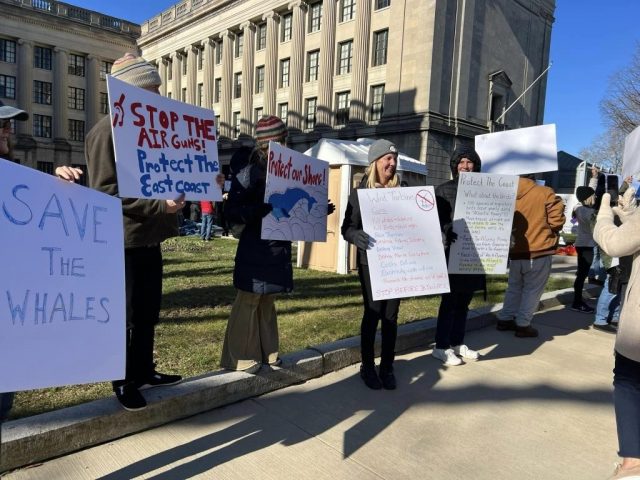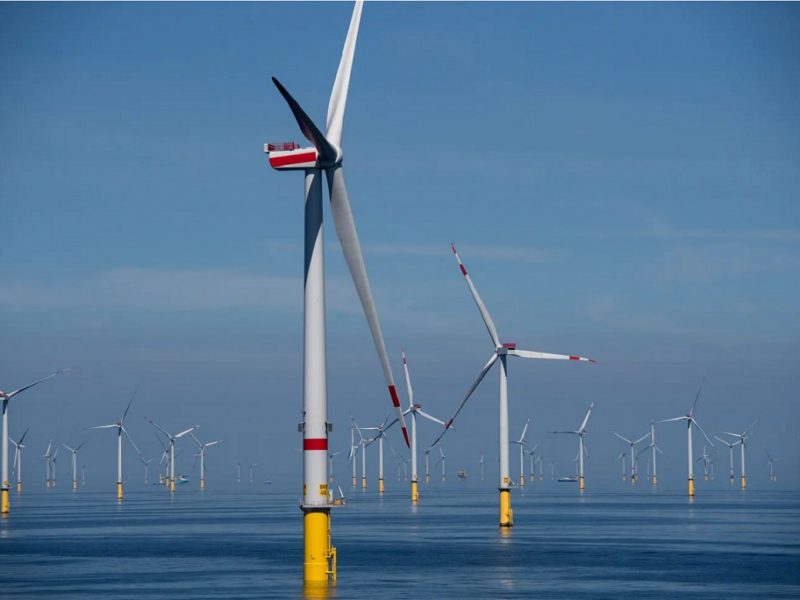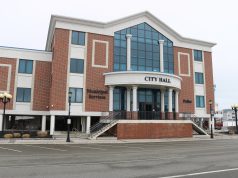
By MADDY VITALE
In a potentially serious setback for offshore wind energy, the Pentagon is expressing concerns that wind farm projects along the East Coast could pose a threat to national security.
According to published reports, the Pentagon is troubled that the Biden administration has plans to expand offshore wind farm projects along the Atlantic coast, warning that nearly all of the new territory is in conflict with military operations. The areas of concern are off Delaware, Maryland, Virginia and North Carolina.
U.S. Rep. Jeff Van Drew, whose district includes the shore towns of Atlantic and Cape May counties, has been one of the most outspoken opponents of offshore wind energy.
Van Drew pointed to the Pentagon’s concerns as another reason why a moratorium should be placed on wind farm projects until there is further study of the impacts.
He said it is time for President Joe Biden and his administration to listen to the “valid” concerns.”
“These warnings can no longer be ignored,” Van Drew said in a statement Monday. “This President and this administration continue to disregard these valid concerns, and now the Pentagon is reiterating the potential impacts the industrialization of our coast will have on our national security. We need to put America first and we need a moratorium on these projects until it is far too late.”

The Danish energy giant Orsted has proposed building nearly 100 towering wind turbines 15 miles off the coast between Atlantic City and Stone Harbor, passing by Ventnor, Margate, Longport, Ocean City, Sea Isle City and other shore towns.
Opponents of the wind farms have concerns that sonar mapping of the seabed for the projects is connected to the recent spate of deaths of whales and other marine life along the coast.
Since December, at least 30 dead whales have washed up on the East Coast shoreline, including 10 in New Jersey. On March 21, eight dolphins beached themselves in Sea Isle City. Two of the dolphins died almost immediately, while six others were euthanized after their condition deteriorated.
Van Drew convened a congressional hearing at the Wildwoods Convention Center in March that drew a standing-room only crowd about the importance of halting the projects until further investigation can be done.
Cape May County opponents have repeatedly warned about the possible harm the projects may cause to the tourism industry, commercial fishing, real estate values, marine life and migratory bird patterns.
They also believe that the wind turbines, which would be as tall as skyscrapers, could cause a visual blight when viewed from the shoreline of the Cape May County beach towns.
Van Drew recently introduced a resolution calling for a congressional investigation of the potential negative impacts of offshore wind development. The resolution demands the halt of wind farm activity pending an investigation of the cause of the whale deaths.
He emphasized that point in his statement Monday.
“When whales and dolphins started washing up on our coast, and I called for a moratorium on these projects until adequate investigations were held, it was met with severe opposition,” Van Drew said. “When fishermen indicated their concerns with how these projects will affect their livelihoods, their concerns were pushed aside.”

He further stated that “when the Bureau of Ocean Energy Management’s (BOEM) own environmental impact statement admitted that offshore wind will have no impact on climate change, there was no response from the (Biden) administration.”
And when the “National Oceanic and Atmospheric Administration’s (NOAA) own scientist raised concerns with how these projects could affect the endangered right whale, he was ignored,” Van Drew continued.
Van Drew pointed to his congressional hearing at the Wildwoods Convention Center in March.
“When my hearing revealed that these massive turbines could interfere with radar systems and highlighted the warnings from our own military, this administration continued full steam ahead,” he said.
Opposition to offshore wind farms has been particularly intense as residents and elected officials continue to strongly denounce them at rallies and other public forums.
Protect Our Coast NJ, an independent grassroots organization opposed to offshore wind energy farms, held a rally in March in Trenton urging the governor to hear their concerns. Several South Jersey elected officials, including Council members, mayors and state assemblymen, were also in attendance and voiced opposition and concern about the projects.
Gov. Phil Murphy, a strong supporter of offshore wind technology, wants New Jersey to become a leader in green energy. So far, New Jersey has approved three offshore wind farms and is looking to add more. Murphy’s goal is to have offshore wind farms producing 11,000 megawatts of power in New Jersey by 2040.








